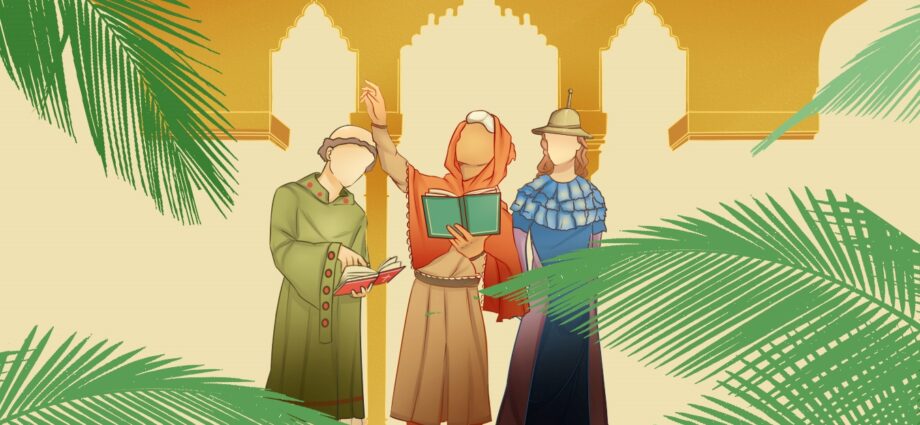By Guillermo Cardenas
In his 2009 speech in Cairo, Barack Obama mentioned Cordoba: “Islam has a proud tradition of tolerance. We see it in the history of Andalusia and Cordoba during the Inquisition”. Obama used al-Andalus as proof of the tradition of tolerance of Islam. In the context of the globalization of jihadist terrorism, the Islamophobia and the conflicts in the Middle East, “there have been calls for a rediscovery of convivencia” and the “renaissance” of the al-Andalus as an example of tolerance and positive mix of multi-cultural ethnicities. Cordoba was the capital of the Cordoban Caliphate, and at the time the largest and wealthiest city in Western Europe. The Caliphate was ruled by the Umayyad dynasty.
The idea of a positive “convivencia” (living togetherness) of al-Andalus is often traced back to Americo Castro’s book on the origins of the Spanish people, published in the middle of the past century. Castro’s thesis of “a society made up of three castes of believers” (here: Jews, Muslims, and Christians) in an “Islamic doctrine of religious tolerance” leading to a period of beneficial coexistence has caused a huge predicament in modern society. Since already in the 10th century these cultures could coexist and now they struggle. The popular book of Maria Rosa Menocal: “The Ornament of the World. How Muslims, Jews, and Christians Created a Culture of Tolerance in Medieval Spain” defends the interpretation that these three religions coexisted. However, some scholars, such as Fanjul or Fernández-Morera, denounce the myth of the three cultures and of Al-Andalus as a paradise and deny that there was tolerant convivencia; they argue that there was instead a precarious coexistence with violence and segregation. The scholar Tolan warns about the dangers of idealization and demonization and the abuse of the terms “tolerance” and “convivencia”, which could lead to a misinterpretation of to what degree there was cohesion.
The political use of al-Andalus as a model of multicultural tolerance and the contrasting opinions about this subject, like those represented in Fernández-Morera’s books, prompt the question about the reality of the coexistence among Jews, Christians and Muslims in al-Andalus.
The reign of Abd al-Rahman III is considered the chapter of maximum splendour in al-Andalus, often referred to as the Golden Age of Islamic Spain. It also sparked the cultural flourishing for the Jewish community in Spain. Abd al-Rahman III adopted a religiously and ethnically inclusive policy that drove a cultural bloom. For many, this period is considered to be a miscegenation, a transmission of ideas in an experience of intercultural tolerance and attainment of knowledge.
If we apply the current standards of social cohesion since nowadays everybody has the same rights independent of religion, then the degree of cohesion between the three communities in Cordoba during the Caliphate of Ab al-Rahman III was rather low. However, looking at the standards of the Middle Ages the conclusion would be more positive. Certainly, there was social discrimination: Christians and Jews had fewer rights than Muslims, they were forced to pay a tax (dhima) for being “protected” and their worship “tolerated”. The dhimi were submitted to Muslim authority and the Islamic law was prevalent in case of conflict, some rights limited, some social roles (for example in the army) were vetoed and some fatwas proclaimed by the Islamic jurisprudence were not only discriminatory but even offensive. On the other hand, each religion had its own independent judicial system, which was a way of segregation to avoid mixing with each other (“contamination”), pointing against social cohesion among the three communities.
Nevertheless, under Abd al-Rahman III’s rule, there are also signs of positive interactions among the three communities such as that some Christians and Jews reached important government positions, that Muslims, Christians and Jews worked together to translate scientific books, that they managed to live side by side, that Muslims men married Christians, that alcohol consumption also involved Muslims and that most of the Cordobian population spoke Arabic regardless of religion. Legal texts between Christians and Muslims suggest that social interaction and business were frequent. The increased rate of conversion during the Caliphate of Cordoba could also be a symptom of social cohesion. To convert, might be in part favoured for the interactions between communities. It might also mean that the different cultures obtained similar characteristics. Moreover, people might have converted since they wanted to belong, which is a sign of social cohesion.
Overall, it seems that in “relative terms” and by the standards of the Middle Ages Cordoba during the Caliphate of Abd al-Rahman III was a place of substantial social cohesion among Muslims, Christians and Jews. In our multicultural world the experience in al-Andalus gives hope to modern day cohesion. The framework in al-Andalus can even help solve the current Arab-Israeli conflict by offering an alternative model to achieve social stability.
Edited by Teun van Dieten, artwork by Teresa Valle

